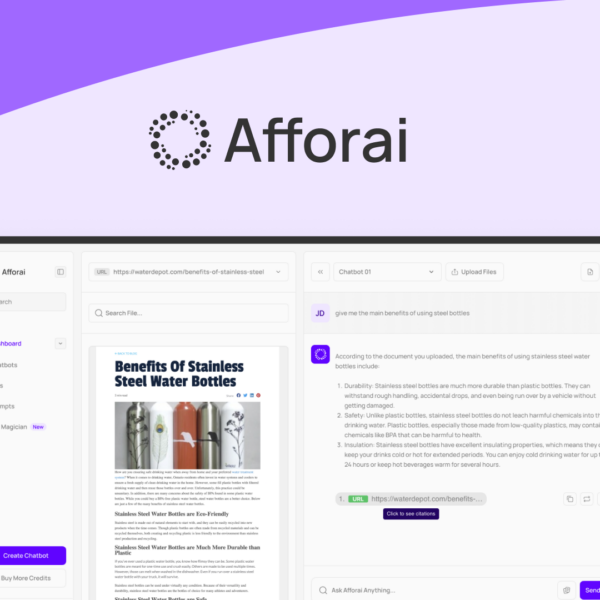A CRM list is a vital tool for businesses, helping to manage customer relationships, track interactions, and optimize communication. By maintaining an accurate CRM list, integrating it with other tools, and regularly updating data, companies can enhance customer engagement and drive growth effectively.
A CRM list is essential for any business looking to enhance customer relationships and streamline operations. By utilizing a well-organized CRM list, businesses can effectively manage interactions, track sales, and ultimately drive growth. In this post, we’ll break down the core elements of a CRM list, highlight its benefits, and guide you on how to optimize yours.
What is a CRM List?
A CRM list is a collection of data about your customers that helps businesses manage their relationships effectively. It includes information such as names, contact details, purchase history, and preferences. By organizing this data, companies can better understand their customers and tailor their marketing and sales strategies to meet specific needs.
Why is a CRM List Important?
Having a well-structured CRM list allows businesses to track interactions with customers, which is vital for building loyalty and improving sales. It helps in segmenting customers for targeted campaigns, tracking customer journey stages, and predicting future sales trends.
Components of a CRM List
A comprehensive CRM list typically includes contact names, phone numbers, email addresses, and demographic information. It may also contain notes from previous interactions and purchase records, enabling businesses to personalize their communication and enhance the customer experience.
How to Create a CRM List
To create an effective CRM list, start by collecting data from various sources such as online forms, surveys, and customer feedback. Use a CRM software tool to organize this data for easy access and management. Make sure to keep the list updated regularly to maintain its accuracy and usefulness.
Best Practices for Maintaining a CRM List
Regularly review and clean your CRM list by removing duplicates and updating contact information. Encourage your team to enter new data promptly after interactions, fostering a culture of organization and precision. This ensures that your CRM list remains a powerful tool for driving business success.
Benefits of Using a CRM List

Using a CRM list offers several important benefits that can significantly enhance a business’s customer relations and efficiency. Here are some key advantages:
Improved Customer Relationships
A well-maintained CRM list allows businesses to track interactions with customers effectively. This tracking helps companies understand customer needs and preferences, leading to more personalized service. Personalization fosters loyalty and makes customers feel valued.
Increased Sales and Revenue
With a CRM list, businesses can identify potential sales opportunities by analyzing customer data and buying patterns. It enables targeted marketing efforts that can lead to an increase in conversion rates, ultimately boosting sales and revenue.
Enhanced Communication
A CRM list streamlines communication between teams and customers. It centralizes all customer information in one place, making it easier for employees to access relevant data and provide timely responses to queries or issues.
Better Data Management
Maintaining a CRM list helps businesses manage data efficiently. Businesses can organize customer information, ensuring that it is reliable and up to date. This organization reduces the risk of errors and improves data accuracy.
Time Efficiency
Using a CRM list saves time by automating various tasks. For instance, reminders for follow-ups can be set, and regular updates can be sent. This automation allows employees to focus more on important tasks rather than getting bogged down with routine administrative work.
How to Choose the Right CRM for Your Business
Choosing the right CRM for your business requires careful consideration and planning. Here are some steps to guide you through the selection process:
Assess Your Business Needs
Begin by identifying what your business needs from a CRM. Consider factors such as the size of your team, the type of customer interactions you have, and your specific goals. Understanding these needs helps narrow down your options.
Research Available CRM Solutions
There are many CRM solutions available, each with unique features. Research and compare different CRM systems. Look for reviews, case studies, and user feedback to understand how each option performs in real-world scenarios.
Evaluate Features and Integrations
Consider what features are essential for your business. This may include contact management, data analytics, automation tools, and mobile accessibility. Additionally, check if the CRM integrates with other tools you use, such as email marketing platforms or accounting software.
Consider User Experience
The user interface of the CRM should be easy to navigate. A complex system might slow down your team instead of helping them. Request demos or trials to see how user-friendly each CRM is before making a decision.
Check Pricing and Support
Lastly, evaluate the pricing structure of the CRM options you are considering. Ensure that it fits within your budget. Additionally, look into the customer support offered by the CRM provider, as good support can be invaluable during implementation and beyond.
Tips for Maintaining Your CRM List

Maintaining an up-to-date CRM list is critical for the success of your customer relationship management efforts. Here are some practical tips to ensure your CRM list remains effective:
Regular Data Cleansing
Set a schedule for regularly reviewing and cleansing your CRM data. This includes removing duplicate entries, correcting inaccuracies, and deleting outdated information. Regular updates will enhance the reliability of your CRM list.
Encourage Team Participation
Involve your entire team in maintaining the CRM list. Encourage them to input new data consistently and remind them about the importance of accurate and timely updates. Team participation fosters accountability and improves data quality.
Utilize Automation Tools
Leverage automation tools to help keep your CRM list current. Many CRM systems offer features such as automated reminders for updates and data entry controls to minimize errors. Automation saves time and reduces the risk of human error.
Monitor Engagement and Feedback
Track customer engagement and feedback to enrich your CRM data. By analyzing interactions, you can gain insights into customer preferences and behaviors. This information can help refine your CRM list and enhance customer relationships.
Training and Support
Provide training for your staff on how to use the CRM effectively. Ensure they understand the importance of maintaining an accurate CRM list and how to navigate the system. Continuous support will help keep their skills sharp and encourage proper usage of the CRM.
Integrating CRM Lists with Other Tools
Integrating your CRM list with other business tools can significantly enhance your operational efficiency. Here are some key benefits and methods for effective integration:
Improved Data Flow
Integrating your CRM with other tools ensures a seamless flow of data across different platforms. This centralizes information, making it readily available for analysis and decision-making, thus reducing the chances of data silos.
Enhanced Customer Insights
By connecting your CRM to analytics and marketing tools, you can gain deeper insights into customer behavior. This data can help you tailor marketing strategies and improve customer experiences based on informed decisions.
Streamlined Marketing Campaigns
Integrating your CRM with email marketing platforms or social media tools allows for targeted marketing campaigns. You can segment your audience based on CRM data and send personalized messages to improve engagement and conversion rates.
Automation of Tasks
Using integration tools like Zapier or native integrations offered by CRM systems can automate repetitive tasks. For example, new leads captured on a website can automatically populate your CRM, saving time and reducing manual input errors.
Enhanced Team Collaboration
When your CRM integrates with project management or communication tools, it fosters better collaboration among team members. Everyone can access important customer information, ensuring a unified approach to customer service.
In Summary: The Power of a CRM List
A well-managed CRM list is essential for any business aiming to improve customer relationships and drive growth. It enables you to understand your customers better, streamline your processes, and make informed decisions.
By following best practices for maintaining your CRM list and integrating it with other tools, you can maximize its effectiveness. This leads to enhanced communication, increased sales, and a better overall experience for your customers.
Don’t underestimate the impact that a robust CRM system can have on your business. Properly implemented, it can pave the way for lasting customer loyalty and success.
FAQ – Frequently Asked Questions About CRM Lists
What is a CRM list and why is it important?
A CRM list is a collection of data about customers that helps businesses manage relationships effectively. It is important because it enables personalized communication and improves customer satisfaction.
How can I maintain my CRM list effectively?
You can maintain your CRM list effectively by regularly cleansing data, involving your team in data entry, and utilizing automation tools to keep information current.
What are the benefits of integrating a CRM with other tools?
Integrating a CRM with other tools improves data flow, enhances customer insights, automates tasks, and facilitates better team collaboration.
How often should I update my CRM list?
You should review and update your CRM list regularly, ideally on a monthly basis, to ensure that the information remains accurate and relevant.
Can I use a CRM for small businesses?
Yes, CRM systems are designed for businesses of all sizes, including small businesses. They can help streamline operations and improve customer engagement.
What features should I look for in a CRM?
Look for features such as user-friendly interfaces, automation capabilities, reporting tools, and integration options with other applications to meet your business needs.




